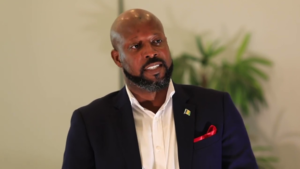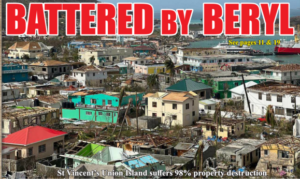
Tourism Minister Carlos James has indicated that St. Vincent and the Grenadines’ tourism sector might take nearly two years to fully recover from the damage inflicted by Hurricane Beryl on July 1.
According to James, experts estimate that recovery from such a natural disaster could require up to 23 months to restore full economic activity. This statement followed the government’s successful approval of a supplemental budget package amounting to EC$136 million (One EC dollar = US$0.37).
James highlighted that the Southern Grenadines, the area hardest hit by the hurricane and heavily reliant on tourism, will benefit significantly from this budget. While EC$22 million has been allocated for home repairs, James stressed that the primary focus must be on supporting small and medium-sized enterprises (SMEs) that are vital to sustainable livelihoods.
The fiscal package includes EC$8 million designated for income support for those in the tourism sector, with an additional EC$500,000 earmarked for the Promoting Youth Micro Enterprises program, specifically for Grenadine residents. Furthermore, EC$1.5 million is set aside for the rehabilitation of tourism sites nationwide.
James noted that two technical experts from the Caribbean Tourism Organization (CTO) based in Barbados have completed a rapid assessment of the tourism sector in the Grenadines. This assessment will guide future decisions on recovery efforts and further evaluations.

James plans to deploy nearly all Ministry of Tourism and Tourism Authority personnel to the Southern Grenadines—including Mayreau, Union Island, Canouan, and Bequia—to gather data and interview tourism sector stakeholders. However, challenges with transportation have temporarily stalled this plan.
“We are working on alternative transportation solutions to ensure that we can support our stakeholders and tourism sector employees on the ground,” James said. “We need to assess the situation thoroughly and deploy the necessary resources to aid their recovery.”
James also emphasized the need to develop a tourism disaster management framework aligned with the Sendai Framework for Disaster Risk Reduction, adopted by the United Nations. This framework will focus on immediate responses, preparation, and post-disaster recovery.
Additionally, the government will explore a sustainable livelihoods framework for tourism, integrating disaster management strategies into the sector. These initiatives are part of a broader effort to build resilience and implement UN disaster risk reduction policies.
James concluded that while rebuilding homes is crucial, it is equally important to prioritize the tourism industry and related businesses in the Southern Grenadines. “Since the majority of residents in these islands rely on tourism for their livelihood, we must invest in their recovery to help them regain their footing,” he said.


